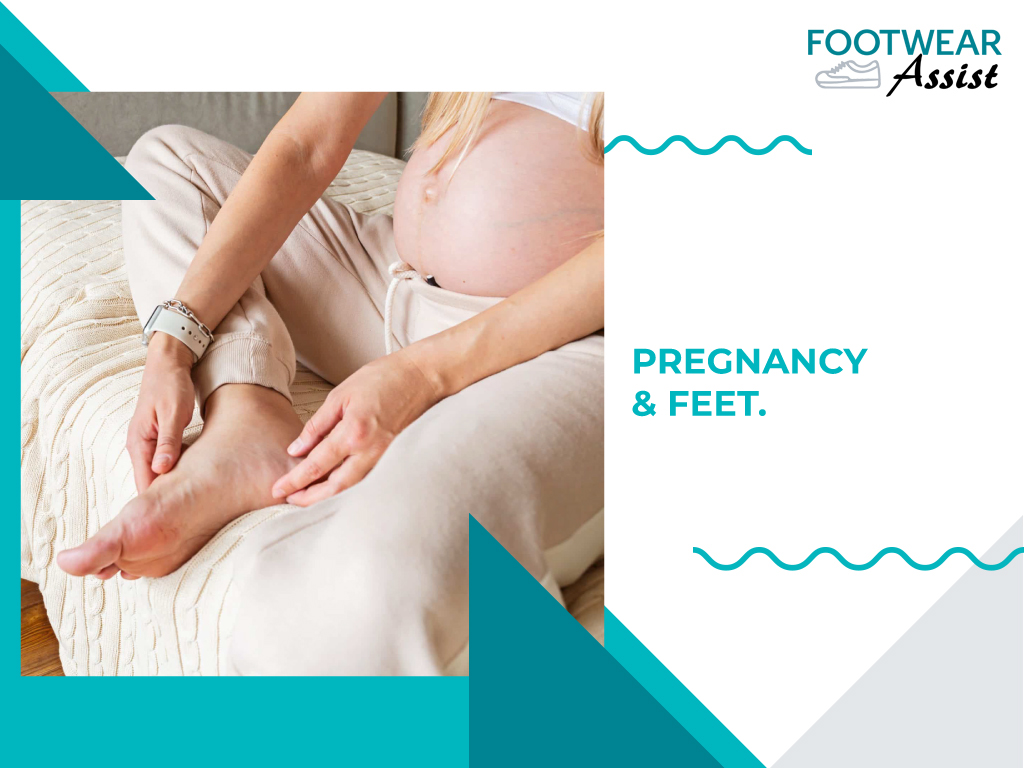Foot size may not be at the top of your list of body parts to expect to grow during pregnancy. However, most pregnant women suffer swelling in their lower legs and feet. You are not imagining things if your ankles appear bloated and your shoes don’t feel quite correct. The extra fluid and blood your body produces to support healthy fetal growth also slows blood circulation. This might cause blood to pool in your lower extremities, resulting in edema.
During pregnancy, you also create more relaxin, a hormone that aids in the relaxation of your tendons, ligaments, joints, and muscles. While relaxin aids in opening your pelvis for birth, it also loosens the tendons and ligaments in your foot. The combination of increased weight and hormones during pregnancy might cause your feet to flatten, lengthen, and broaden. Leg or ankle swelling will likely subside a week after your baby is born, but your feet may never be the same.
Pregnancy has been found in studies to create a permanent loss in the arch and increase in foot length—often only after a woman’s first pregnancy. While further research is needed to know whether these structural changes can be avoided, there are a few things you may take to lessen swelling and feel more comfortable throughout your pregnancy.
Things to Know About Your Feet During Pregnancy
You May Lose Arch Support
Hormone alterations are frequently at the core of many other body changes during pregnancy. Because hormones flow throughout the body, their effects might be felt wherever. Relaxins and progesterones are two hormones that are typically present in our bodies but are increased during pregnancy. They both relax your muscles and allow your ligaments to stretch or be more flexible. Flexibility in the pelvic region is critical throughout the birthing process, which is one of the main reasons these hormones rise during pregnancy. These two hormones, however, can cause any ligament in the body to become overly flexible.
Several studies have shown that relaxin levels in pregnant women increase tenfold, which naturally leads to looser ligaments, known as ligament laxity. This means that there is less arch support for the feet. Furthermore, the increase in weight during pregnancy increases the pressure on these looser tissues of the feet, which can result in a variety of foot pain and difficulties, such as muscle or tendon strains and plantar fasciitis.
All of these causes may cause your foot to become broader, particularly towards the ball of your foot and toes. You may also need to buy a larger shoe size, with the broadening and lengthening effects of pregnancy being a permanent change following pregnancy.
Your Walk Could Change
Some studies have also discovered that the gait (how you walk) can change during pregnancy. Your spine and pelvis may tend to curve inward to accommodate an expanding abdomen, resulting in a leaned-back posture. The shift in your center of gravity, which causes you to shift your weight to the heel of your foot to compensate, can also cause a “waddling gait,” which is quite common among pregnant women.
Ingrown Toenails Become More Dangerous
Ingrown toenails are a severe problem that can result from foot edema. While soft tissues on the sides of the toenails or the nail are typical during pregnancy, combining soft tissues and changing toenails can cause painfully ingrown nails in certain people. These nails are prone to infection, resulting in redness, swelling, warmth, drainage, and, in some cases, pus leakage, in addition to discomfort.
In that case, it’s critical to consult a doctor at once. Removing the ingrowing portions and treating the infection may require sterile surgery in a clinic or an antibiotic.
Edema Is to be Expected
Edema occurs when fluid becomes trapped in your body’s tissues, creating swelling, most commonly in your legs, ankles, and feet, although other body regions can also be affected. A lower sodium diet, compression socks, elevation, and water are critical to avoiding or delaying this issue.
Can’t put on compression socks? Request assistance from a family member or a friend! You can also buy gadgets such as Footwear Assist to help you reach your feet regardless of pregnancy swelling and pains.
Your Feet Will Change Post Pregnancy
It comes as no surprise that swollen feet during pregnancy may necessitate a larger shoe size. But what about once the baby is born?
Foot changes that occur during pregnancy, such as a longer or broader foot structure, are likely to be permanent. Several pregnancies can cause multiple alterations in your feet, with research indicating that the most crucial foot changes occur during the first trimester.
Overall, pregnancy is an amazing experience. While growing a new life inside of you can be incredible, it can also be very difficult. As your body continues to change, it’s important to take care of yourself so that you can enjoy the next few months and the new life that you are helping to create. Pregnancy feet don’t just have to be a bother (although they will likely hurt a little at times); they can be something positive. Your growing baby is reaping all of the health benefits that come along with proper foot support. So remember, while pregnant ladies may not win any fashion awards, they are definitely doing what’s best for their unborn child in regard to footwear.

